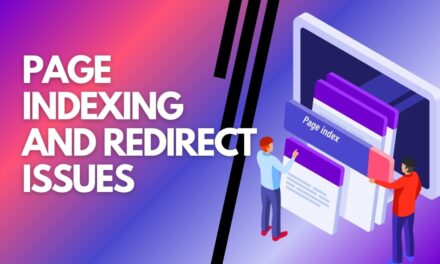Introduction:
Ever been frustrated by a website that takes forever to load? Well, you’re not alone. Slow website speed can turn visitors away and even make Google less friendly to your website. But don’t worry, this guide is here to help! We’ll talk about why websites can be slow and give you easy ways to speed yours up. No tech jargon, just simple tips to make sure your website is speedy and keeps your visitors happy. Let’s jump in and make your website faster!
What is Slow Website Speed
Slow website speed refers to the time it takes for a website to fully load its content and become usable for visitors. A website is considered slow if it takes longer than 3 seconds to appear visually complete on the screen. This can be frustrating for users, leading to increased bounce rates (people leaving the website quickly) and lower conversion rates (people taking desired actions like buying something).
Learn more about SEO goals and objectives.
Several factors can contribute to slow website speed, categorized into front-end (user-facing) and back-end (server-side):
Front-end issues contributing to slow website speed:
- Large Media Files: High-resolution images, videos, and other media files can significantly increase page load times.
- Unoptimized Code: Inefficient or redundant HTML, CSS, and JavaScript code can slow down a website.
- Too Many HTTP Requests: Numerous elements on a webpage lead to multiple HTTP requests, increasing load times.
- Render-Blocking Resources: Some resources, especially JavaScript and CSS files, may block the rendering of a page until they are fully loaded.
- Not Leveraging Browser Caching: Failure to use browser caching forces the browser to download resources repeatedly, causing delays.
- Lack of Content Delivery Network (CDN): Without a CDN, users may experience slower load times, especially if they are geographically distant from the server.
- Poorly Designed or Unresponsive Design: Websites not optimized for different devices and screen sizes may result in slower loading times.
- Excessive Use of Third-Party Widgets: Integrating too many third-party widgets, plugins, or scripts can introduce additional HTTP requests and increase webpage complexity.
- Inefficient Font Loading: Loading multiple fonts or using custom fonts without proper optimization can contribute to slower page rendering.
- Uncompressed Resources: Files that are not compressed before being sent to the user can result in longer download times.
Back-end issues contributing to slow website speed:
- Server Overload: If the server hosting the website is overloaded with requests, it can result in delayed response times and slow overall website performance.
- Inefficient Database Queries: Poorly optimized database queries, such as retrieving excessive or unnecessary data, can lead to slower website speed.
- Unoptimized Server-Side Code: Inefficient or poorly written server-side code, including scripting languages like PHP or server-side frameworks, can contribute to slow response times.
- Limited Server Resources: Insufficient server resources, including CPU, memory, and bandwidth, can result in slower processing and delivery of content to users.
- Inadequate Hosting Services: Choosing a hosting provider or plan with limited resources or poor performance can negatively impact website speed.
- No Content Delivery Network (CDN): Lack of a CDN for serving static and dynamic content from distributed servers can lead to slower load times, especially for users located far from the server.
- Slow External APIs: If a website relies on external APIs (Application Programming Interfaces) that are slow to respond, it can affect the overall website speed.
- Inefficient Code Execution: Server-side scripts that are not optimized for quick execution can contribute to delays in processing and delivering content.
- Insufficient Caching Strategies: Inadequate caching mechanisms at the server level can result in repeated processing of requests, slowing down the overall website speed.
- Security Measures Impacting Performance: Overly aggressive security measures, such as excessive server-side security checks, can contribute to slower response times.
Addressing both front-end and back-end issues is crucial for optimizing website speed and providing a better user experience.
Here are solutions for each of the front-end issues contributing to slow website speed:
- Large Media Files: Optimize images and videos by compressing them without compromising quality. Use modern image formats like WebP, and employ lazy loading for images that are not immediately visible on the screen.
- Unoptimized Code: Regularly review and refactor code to eliminate redundancies and improve efficiency. Minify and compress CSS and JavaScript files to reduce file sizes. Remove unused code and comments.
- Too Many HTTP Requests: Combine and minimize CSS and JavaScript files to reduce the number of HTTP requests. Use CSS sprites for small images and consider using asynchronous loading for non-essential scripts.
- Render-Blocking Resources: Load critical resources asynchronously or defer their loading to prevent them from blocking the rendering of the page. Prioritize above-the-fold content to ensure faster initial rendering.
- Not Leveraging Browser Caching: Set appropriate cache headers for static resources. Utilize versioning or cache busting techniques to force the browser to download updated resources only when necessary.
- Lack of Content Delivery Network (CDN): Implement a CDN to distribute static content across multiple servers globally. This reduces latency and speeds up the delivery of resources, especially for users in different geographical locations.
- Poorly Designed or Unresponsive Design: Adopt responsive web design principles to ensure the website is optimized for various devices and screen sizes. Test the website on different browsers and devices to identify and address any responsiveness issues.
- Excessive Use of Third-Party Widgets: Limit the number of third-party widgets and scripts. Choose lightweight alternatives or asynchronous loading for non-essential components. Regularly review and update third-party scripts to ensure optimal performance.
- Inefficient Font Loading: Optimize font loading by using the “font-display” property to control how fonts are rendered. Minimize the number of different fonts and font weights/styles used on the website.
- Uncompressed Resources: Compress all resources, including images, stylesheets, and scripts, before sending them to users. Use tools like Gzip or Brotli for compression. Ensure that your server is configured to deliver compressed content.
Implementing these solutions can significantly improve front-end performance and help in achieving faster website speed, providing a better user experience.
Here are solutions for each of the back-end issues contributing to slow website speed:
- Server Overload: Optimize server resources by scaling vertically (upgrading server hardware) or horizontally (adding more servers). Implement load balancing to distribute traffic evenly and prevent overload.
- Inefficient Database Queries: Optimize database queries by indexing columns, avoiding SELECT * queries, and fetching only the necessary data. Use database caching and consider denormalization for frequently accessed data.
- Unoptimized Server-Side Code: Regularly review and optimize server-side code. Utilize profiling tools to identify performance bottlenecks and refactor code for better efficiency. Consider using server-side caching mechanisms.
- Limited Server Resources: Upgrade server hardware or switch to a more robust hosting plan with sufficient CPU, memory, and bandwidth resources. Monitor resource usage and scale accordingly as the website grows.
- Inadequate Hosting Services: Choose a reliable hosting provider with a track record of good performance. Select a hosting plan that meets the website’s resource requirements. Consider managed hosting services for better server management.
- No Content Delivery Network (CDN0): Implement a CDN to distribute static and dynamic content globally. This reduces latency and speeds up content delivery, especially for users located far from the server.
- Slow External APIs: Optimize external API calls by caching responses, implementing asynchronous requests, and handling errors gracefully. Consider local caching for frequently requested API data.
- Inefficient Code Execution: Optimize server-side scripts for quick execution. Identify and eliminate unnecessary computations. Use efficient algorithms and data structures to improve code efficiency.
- Insufficient Caching Strategies: Implement effective caching mechanisms at the server level. Use tools like Redis or Memcached for caching frequently accessed data. Employ appropriate cache expiration policies to ensure data consistency.
- Security Measures Impacting Performance: Review and optimize security measures to strike a balance between security and performance. Implement caching for security checks, use efficient encryption algorithms, and ensure that security measures are tailored to the specific needs of the website.
Implementing these solutions can help address back-end issues and contribute to a significant improvement in website speed and overall performance.
How to measure website speed:
Several tools can help you measure your website’s speed, such as Google PageSpeed Insights, GTmetrix, and Pingdom. These tools analyze your website and provide recommendations for improvement.
Resize and compress images using tools like TinyPNG or JPEGmini. Consider alternative formats like WebP. Use lazy loading to progressively load images as the user scrolls.
Minify HTML, CSS, and JavaScript files to remove unnecessary whitespaces and comments. Tools like Google Closure Compiler can help.
Regularly use tools like Google PageSpeed Insights, GTmetrix, and Pingdom to identify new issues and track improvements.
Remember, improving website speed is an ongoing process. By implementing these strategies, monitoring your website’s performance, and constantly iterating, you can create a fast and responsive website that delivers a positive user experience.





